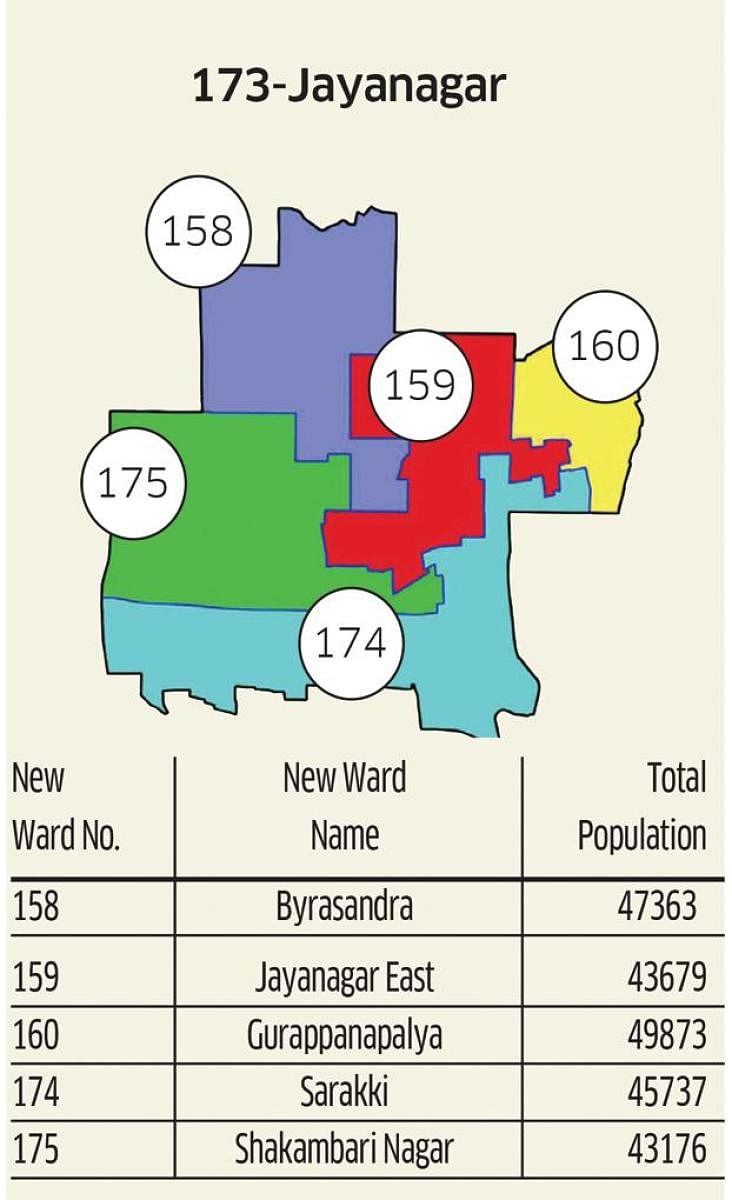BBMP: 225 wards to be expanded to 400?



The city was caught napping without the most basic of amenities in 2007, when the 100-ward BMP morphed into a 198-ward behemoth called the Bruhath Bengaluru Mahanagara Palike (BBMP). Thirteen years later, the city has another opportunity to plan its future. But will it be smarter this time?
Put simply, the smartest way would be to redraw the Palike’s ward boundaries so that each corporator represents a manageable number of citizens. Today, 198 corporators represent an estimated 1.3 crore people. But the actual population could be much higher.
True representation
So, how many BBMP wards will truly represent Bengalureans in the Council? The delimitation exercise that finalised a plan in June stuck to 198, but redrew several ward boundaries. A new Joint Select Committee has now proposed to increase the number to 225.
The panel’s rationale, as articulated by its head, C V Raman Nagar MLA, S Raghu, is this: “Our suggestion is to add another 27 wards to cater to the increased population in the city’s outer areas. The inner wards are only 3-4 sqkm in area, while the outer ones are up to 28 sqkm. More wards can strike a balance.”
Future-proofing
But does an addition of 27 wards be enough to ‘future-proof’ the city’s decentralised governance setup? Indeed, 225 wards would mean every corporator represents an estimated 50,000 to 55,000 people. “In another 20 years, the city’s population will double. So why not double the ward numbers to 400,” asks V Ravichander, who was part of the BBMP Restructuring Committee.
His contention is this: “If deep decentralisation is the way forward, then the ward size should be capped at 20,000 to 25,000 people. Where did this 225 come from, it is neither here nor there.”
The Karnataka Municipal Corporations (KMC) Act mandates that the number of wards cannot exceed 200. Unless the Act is amended or the new BBMP Bill is enacted, the delimitation process with a target of 225 could run into legal trouble.
Passing the Bill
The Joint Select Committee is aware of this problem. Raghu is hopeful that the bill will be passed in the forthcoming Assembly session. As for the ‘225’ proposal, he agrees that this can be negotiated. The 2021 census could reveal a city population far higher than the currently estimated 1.3 crore. But the census figures are expected to come out only after three years.
On the ground, the delimitation exercise had sparked much debate last year. In October, citizens’ collective Whitefield Rising (WR) had filed an objection, stating that the number of wards was based on erroneous and outdated census figures.
Drawing attention to Mahadevapura, a vast constituency with eight wards, the collective had asked that the number be raised to at least 25 to 30 “to make local governance and representation realistic.” As WR member Zibi Jamal points out, “The population of Mahadevapura has exploded since 2011. Let them look at current population levels based on voter registration and other government data.”
Reworking zones
Beyond wards, the structural reform of BBMP zones could make a big impact on both the Palike and decentralisation of governance. The panel wants to reduce the number of zones from eight to five, each headed by a principal secretary-level officer. Tightening the administration is the stated objective.
The B S Patil Committee on BBMP Restructuring had earlier proposed to split the city corporation into three parts. This has now been effectively shelved. But the zones could morph into mini Palikes but much less powerful than envisaged before.
Zonal budgets
BBMP Commissioner, N Manjunatha Prasad has also talked about how these zones could have their own zonal budgets based on inputs from Ward Committees under their jurisdiction. It could potentially spark a bottom-up approach in prioritising development works.
But there is a problem. The draft legislation proposes only an advisory role for the ward panels, a far cry from the articulated need to empower them financially. The Joint Select Committee assures that it will look into it. The next few weeks will be crucial.